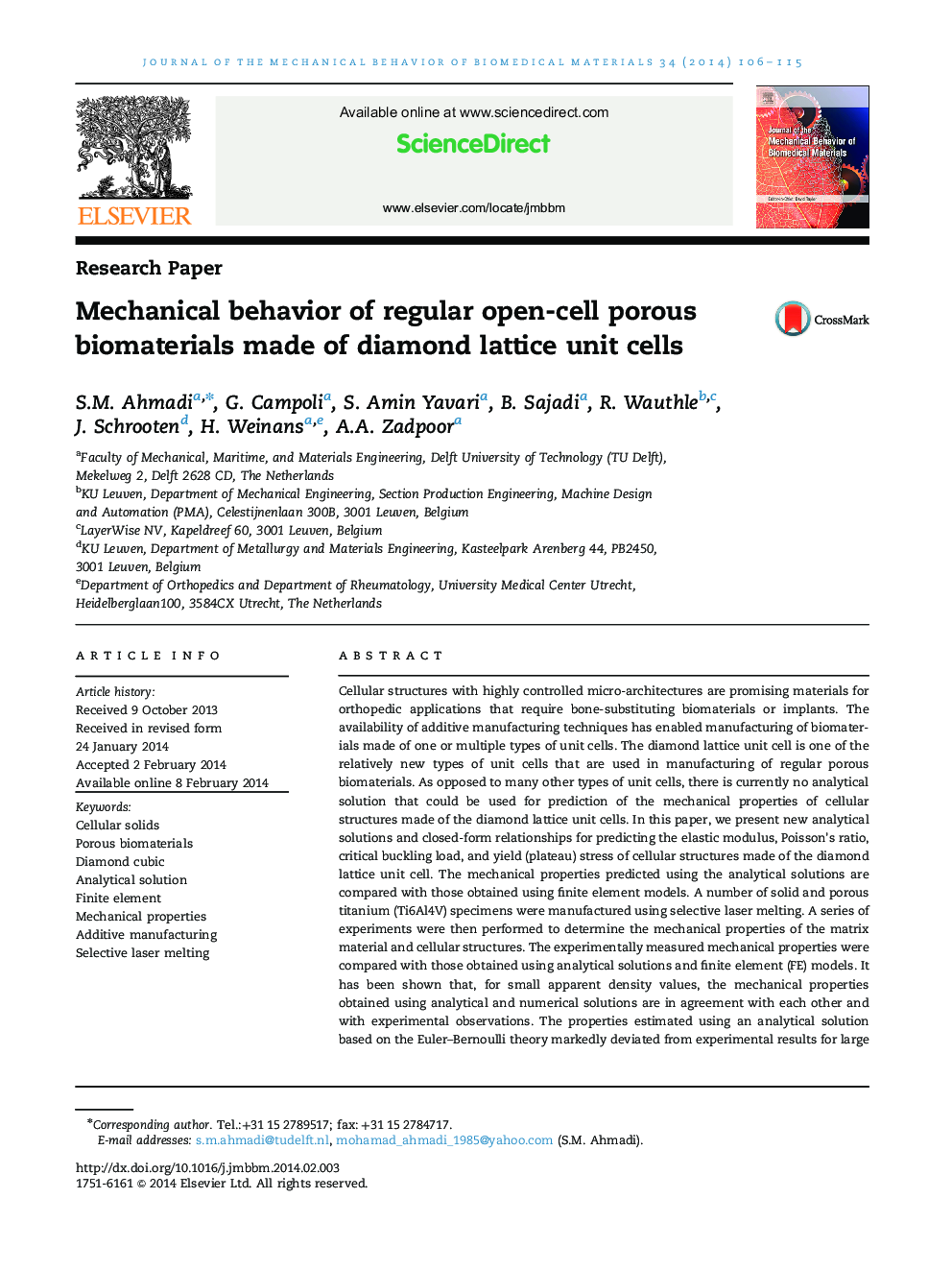| کد مقاله | کد نشریه | سال انتشار | مقاله انگلیسی | نسخه تمام متن |
|---|---|---|---|---|
| 810756 | 1469111 | 2014 | 10 صفحه PDF | دانلود رایگان |
• Mechanical properties of cellular structures made of diamond unit cells are studied.
• Analytical formulas are derived using the Timoshenko and Euler–Bernoulli theories.
• Analytical solutions are compared with finite element solutions and experiments.
• For low densities, all solutions are in good agreement with experiments.
• One of the analytical solutions (Euler–Bernoulli) is inaccurate for high densities.
Cellular structures with highly controlled micro-architectures are promising materials for orthopedic applications that require bone-substituting biomaterials or implants. The availability of additive manufacturing techniques has enabled manufacturing of biomaterials made of one or multiple types of unit cells. The diamond lattice unit cell is one of the relatively new types of unit cells that are used in manufacturing of regular porous biomaterials. As opposed to many other types of unit cells, there is currently no analytical solution that could be used for prediction of the mechanical properties of cellular structures made of the diamond lattice unit cells. In this paper, we present new analytical solutions and closed-form relationships for predicting the elastic modulus, Poisson׳s ratio, critical buckling load, and yield (plateau) stress of cellular structures made of the diamond lattice unit cell. The mechanical properties predicted using the analytical solutions are compared with those obtained using finite element models. A number of solid and porous titanium (Ti6Al4V) specimens were manufactured using selective laser melting. A series of experiments were then performed to determine the mechanical properties of the matrix material and cellular structures. The experimentally measured mechanical properties were compared with those obtained using analytical solutions and finite element (FE) models. It has been shown that, for small apparent density values, the mechanical properties obtained using analytical and numerical solutions are in agreement with each other and with experimental observations. The properties estimated using an analytical solution based on the Euler–Bernoulli theory markedly deviated from experimental results for large apparent density values. The mechanical properties estimated using FE models and another analytical solution based on the Timoshenko beam theory better matched the experimental observations.
Figure optionsDownload high-quality image (214 K)Download as PowerPoint slide
Journal: Journal of the Mechanical Behavior of Biomedical Materials - Volume 34, June 2014, Pages 106–115
